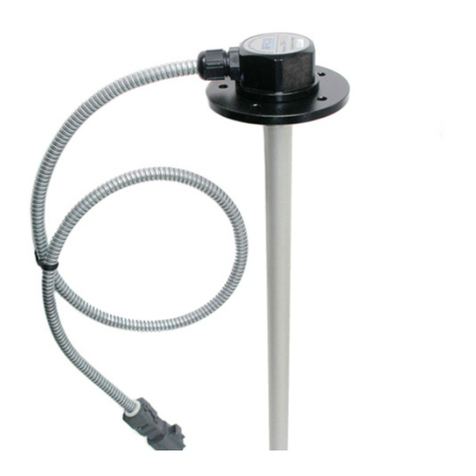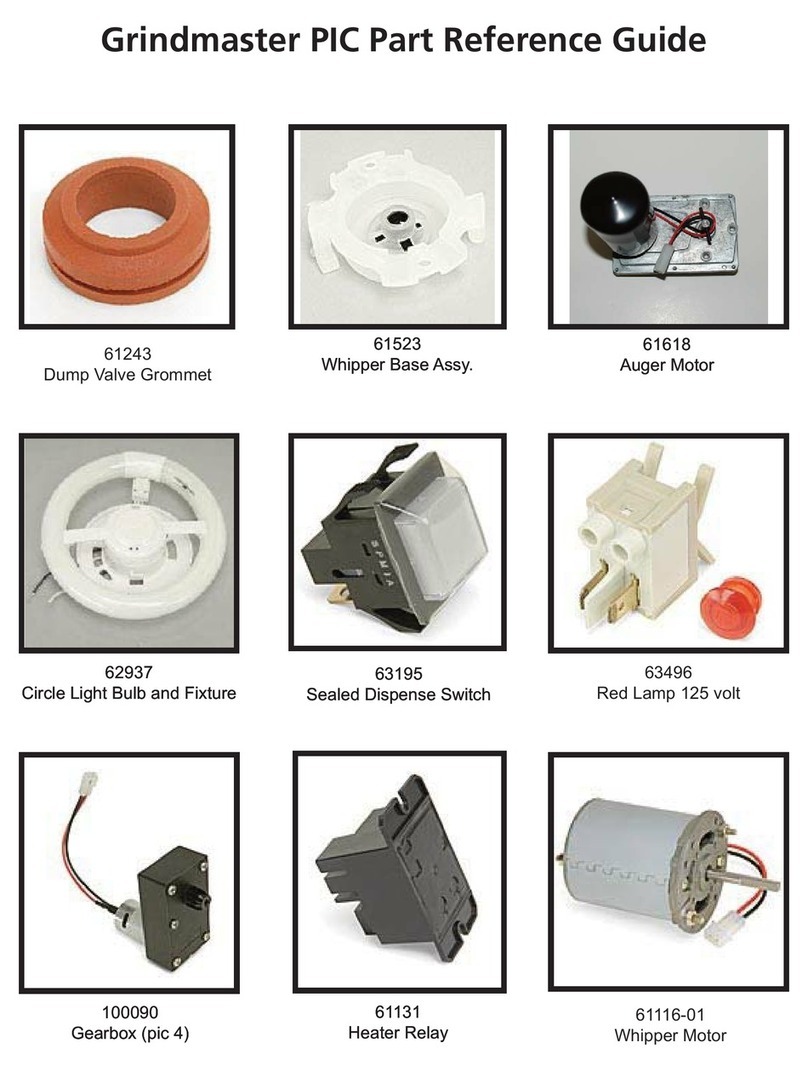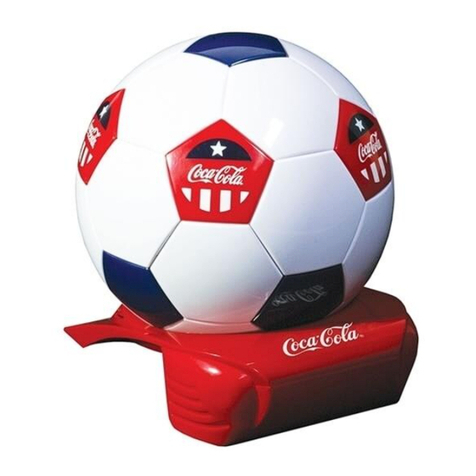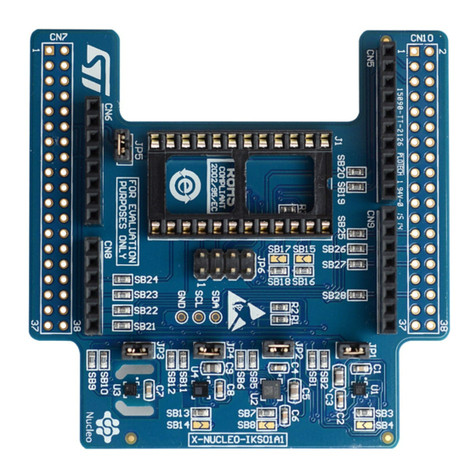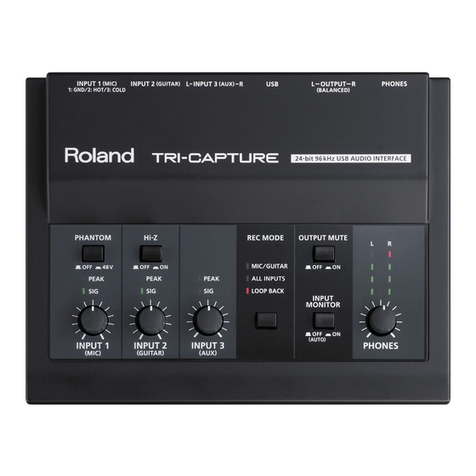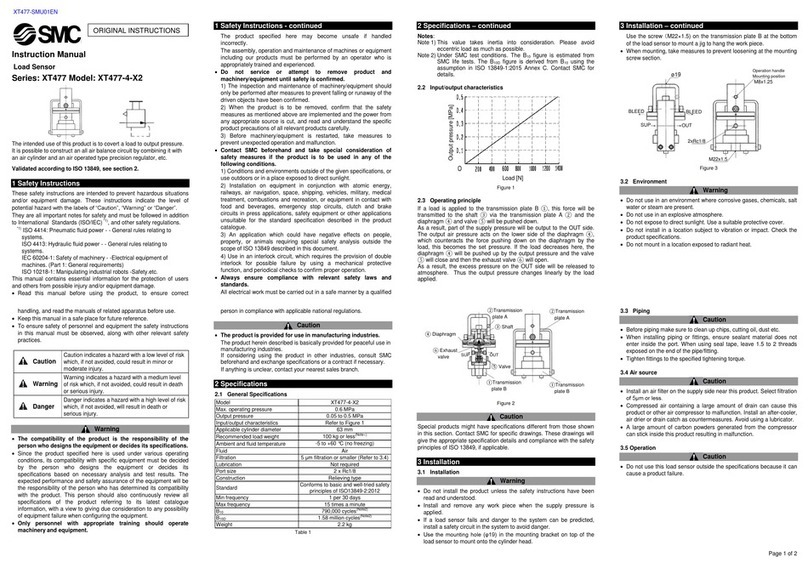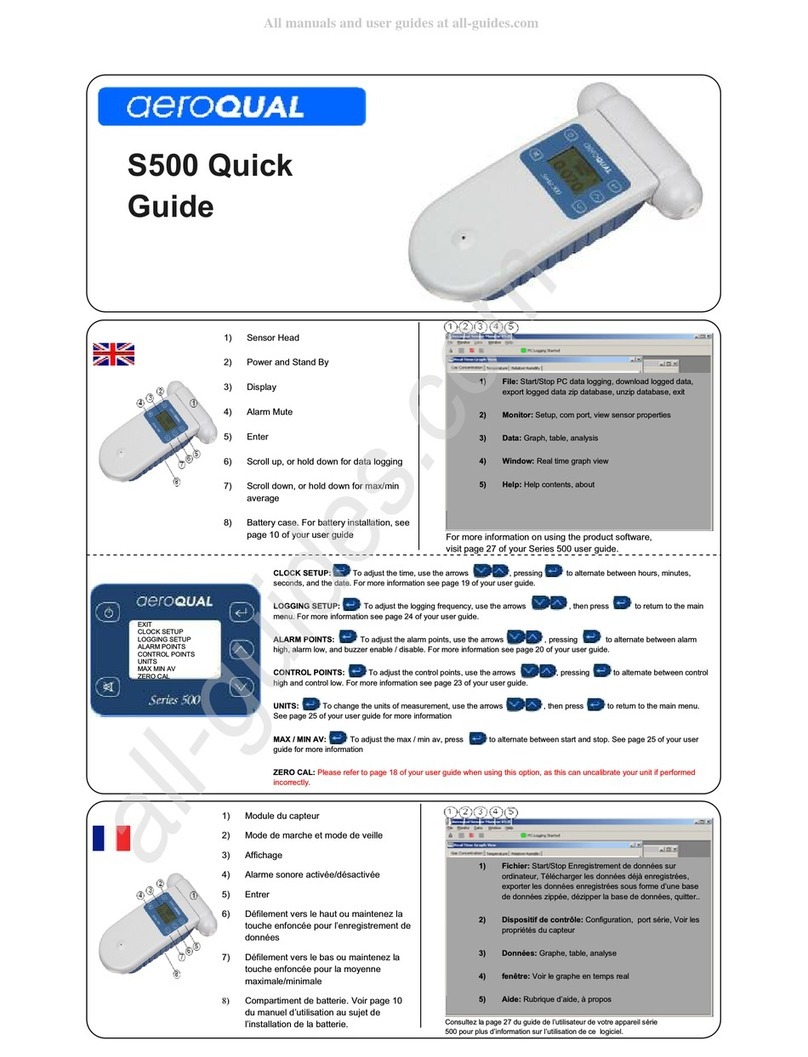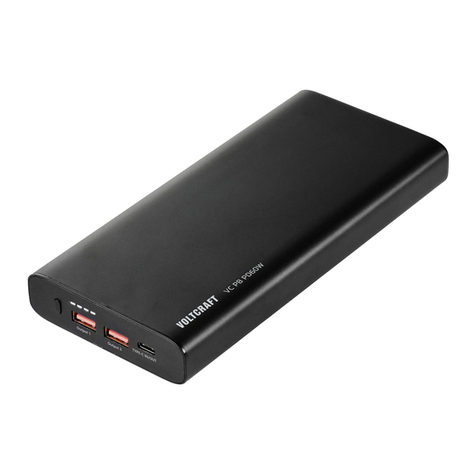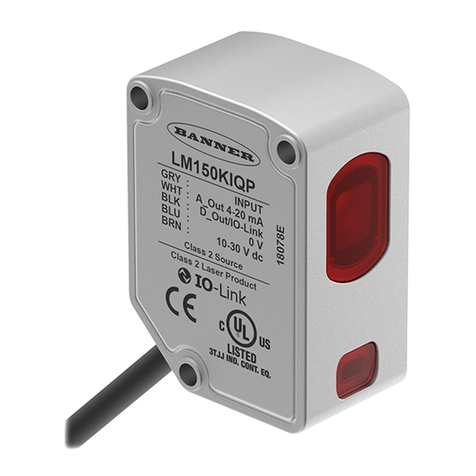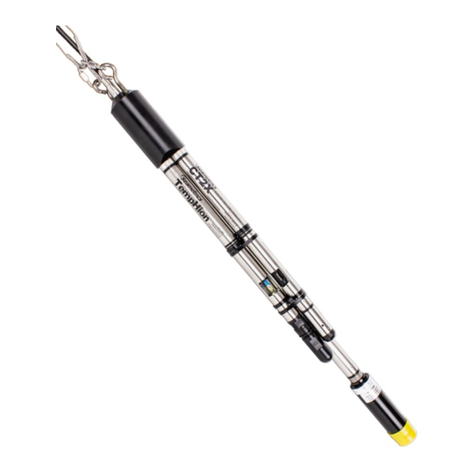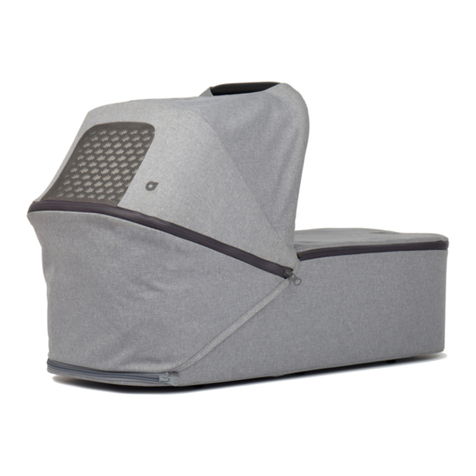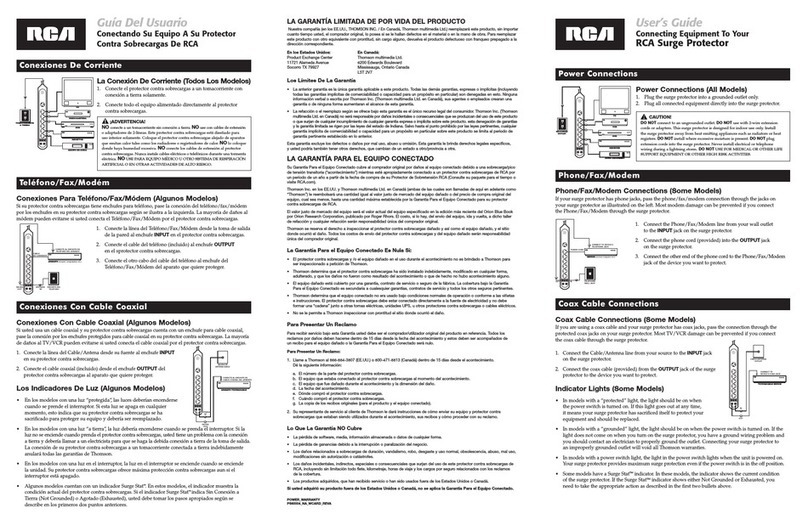Seeley Convair CTA250 User manual

INSTALLATION & OPERATION MANUAL
CTA250 and CTA500 Evaporative Cooler
Original English Instructions

i |
TABLE OF CONTENTS
IMPORTANT SAFETY INSTRUCTIONS 1
Read And Save These Instructions For Future Reference. 1
Warnings 1
Employer And Employee Responsibilities 1
Installer And Maintenance Contractors - Risk Assessment 1
Some Points To Consider 1
Other Important Requirements 1
QUICK GUIDE 2
INSTALLATION 4
Cooler Location 4
Access For Servicing And Maintenance 4
Removing The Venturi 4
Removing The Transition 5
New Installations 5
Mounting The Roof Jack 5
Securing The Roof Jack And Transition 5
Existing/Replacement Installations 6
Fitting The Optional Leg Support Kit 6
Fitting The Optional Weatherseal 7
Conveying The Cooler To The Roof 7
Mounting The Cooler 8
Cable Installation 8
Installing The Venturi/Fan Assembly 8
Water Requirements 9
Water Pump 9
Fitting The Optional Purge Pump 9
Installing The Float Valve 10
Mains Water Connection 10
Bleed Funnel 11
Electrical Requirements 11
DIN Rail Setup 12
COMMISSIONING THE COOLER 12
Retting The Pad Frames 12
Setting The Water Level 12
Commissioning Completion Checklist 13
TROUBLE SHOOTING 14
EXPLODED VIEW 15
USER SAFETY 16
OPERATING INSTRUCTIONS 16
Operating Your Cooler 16
Continuous Bleed System 16
Health Regulations 16
MAINTENANCE 17
Access For Servicing And Maintenance 17
Residential Maintenance Schedule 18
Additional Requirements For Coolers With Bleed System 19
Residential Service Record 20
Commercial / Industrial Maintenance Schedule 21
Requirements For All Coolers 21
Additional Requirements For High Operation Hours 22
Commercial Service Record 23
NOTES 24
WARNING! Failure to install and commission the product in compliance with these instructions, or failure to do
the job properly and competently, may void the customer’s warranty. Further, it could expose the Installer and/or
the Retailer to serious liability.

CTA EVAPORATIVE COOLER INSTALLATION MANUAL |1
IMPORTANT SAFETY INSTRUCTIONS
READ AND SAVE THESE INSTRUCTIONS FOR
FUTURE REFERENCE.
Means for all pole disconnection must be incorporated in the
xed wiring in accordance with the wiring rules.
If the supply cord is damaged, it must be replaced by the
manufacturer, its service agent or similarly qualied persons in
order to avoid a hazard.
The following specications for the cooler water supply are
required:
Min Water Pressure: 15psi (100kPa)
Max Water Pressure: 115psi (800kPa)
New hose sets supplied with the appliance are to be used and
old hose-sets should not be re-used.
WARNINGS
TO REDUCE THE RISK OF FIRE, ELECTRIC
SHOCK, OR INJURY TO PERSONS, OBSERVE THE
FOLLOWING:
1.Installation work and electrical wiring must be done by
qualied person(s) in accordance with all applicable codes
and standards, including re-rated construction.
2.When cutting or drilling into wall or ceiling, do not damage
electrical wiring and other hidden utilities.
3.Ducted fans must always be vented to the outdoors.
4.Do not use this fan with any solid-state speed control device.
EMPLOYER AND EMPLOYEE RESPONSIBILITIES
The installation and maintenance of evaporative coolers at
height has the potential to create Occupational Health and
Safety issues for those involved. Installers are advised to
ensure they are familiar with the relevant State and Federal
legislation, such as Acts, Regulations, approved Codes of
Practice and National Standards, which oer practical guidance
on these health and safety issues. Compliance with these
regulations will require appropriate work practices, equipment,
training and qualications of workers.
Seeley International provides the following information as a
guide to contractors and employees to assist in minimising risk
whilst working at height.
INSTALLER AND MAINTENANCE CONTRACTORS -
RISK ASSESSMENT
A risk assessment of all hazardous tasks is required under
legislation. A risk assessment is an essential element that
should be conducted before the commencement of work, to
identify and eliminate the risk of falls or to minimise these risks
by implementing control measures. There is no need for this to
be a complicated process, it just is a matter of looking at the job
to be done and considering what action(s) are necessary so the
person doing the job does not injure themselves.
This should be considered in terms of:
• What are the chances of an incident happening?
• What could the possible consequence be?
• What can you do to reduce, or better still, completely get rid of
the risk?
SOME POINTS TO CONSIDER
• What is the best and safest access to the roof and working
areas?
• If a worker is alone, who knows they are there and if they get
into diculty, how can they summon help? (Call someone on
the ground? Mobile phone? etc.)
• What condition is the roof in? Should the trusses, underside
or surface be checked?
• Does the worker have appropriate foot wear? (Flat sole jogger
type is advisable.)
• Are all power cables / extension leads safe and appropriately
rated?
• Are all ladders, tools and equipment suitable in good
condition?
• Where ladders are to be used, is there a rm, stable base for
them to stand on? Can they be tied or secured in some way
at the top? Is the top of the ladder clear of electricity supply
cables?
• Is there a roof anchor to attach a harness and lanyard to? If
so, instruction should be issued for the use of an approved
harness or only suitably trained people used.
• Are all tools and materials being used, prevented from
slipping and falling onto a person at ground level? Is the area
below the work area suitably protected to prevent persons
walking in this area?
• Does the work schedule take into account weather conditions,
allowing for work to be suspended in high winds, thunder
storms/lightning or other types of weather giving wet, slippery
surfaces?
• Is there an on-going safety check system of harnesses,
ropes, ladders and access/lifting equipment and where they
exist on roofs, anchor points before the commencement of
work?
• Is there a system which prevents employees from working
on roofs if they are unwell or under the inuence of drugs or
alcohol?
• Are there any special conditions to consider i.e. excessive
roof pitch, limited ground area, fragile roof, electrical power
lines?
OTHER IMPORTANT REQUIREMENTS
• Never force parts to t because all parts are designed to t
together easily without undue force.
• Never drill holes in the pan (Reservoir) of the cooler.
• Check the proposed cooler location, to ensure that it is
structurally capable of supporting the weight of the cooler, or
provide an adequate alternate load bearing structure.
Ensure the installation complies with all local and national
regulations with regards to electrical, plumbing and bushre/
wildre construction requirements.

2 |
QUICK GUIDE
Step 1
SAFETY
Read & understand the safety section.
Step 7
SECURE ROOF JACK &
TRANSITION
Use the TEK screws provided. Break the
transport clips for the weatherdamper.
Step 14
CONNECT MAINS WATER
Use the supplied ttings.
Step 19
SET THE WATER LEVEL
Turn on the mains water and adjust the
oat to allow water to ll to the required
level.
Step 20
COMMISSIONING THE COOLER
Switch the mains power on and test run
the cooler.
Step 21
FINAL CHECK
Complete the commissioning checklist at
the end of this document.
Step 2
COOLER LOCATION
Check cooler location. Consider
regulations. Discuss with customer.
Step 15
INSTALL BLEED FUNNEL
Never drain waste water directly onto the
roof. Be sure to use supplied ‘O’ Rings
and ttings.
Step 3
REMOVE VENTURI
Press the clip or remove the screws on
both sides of the venturi to release.
Step 9
CONVEY COOLER TO ROOF
Page 1
Page 5
Page 10
Page 13
Page 4
Page 11
Page 12
Page 7
Page 13
Page 4
ILL969-C
Always use 2 persons to position the
cooler when handling manually.
Step 13
INSTALL FLOAT VALVE
Assemble the oat valve to the cooler.
Ensure all washers and o-rings are in
place. No thread tape is required.
Page 10
Step 8
FIT OPTION LEG SUPPORT
Page 7
LOWER EVAPORATIVE
COOLER ONTOT
HE
TRANSITION
ENGINEERS AND INSTALLERS PLEASE NOTE:
THE BREEZAIR TBA COOLER RELYONTHEMUST
CURB AND DUCT FOR ITS MAJOR ATTACHMENT
TO THE BUILDING.
THE LEGS SHOWN ON THIS DRAWING HAVE NO
PERFORMANCE RATINGS FOR DOWN-LOAD OR
WIND-LOAD.
ROOFING STRUCTURE
ILL3404-A

CTA EVAPORATIVE COOLER INSTALLATION MANUAL |3
Step 22
CLEAN UP
Clean up the site!
Step 23
CUSTOMER HANDOVER
Show the customer how to operate the
cooler. Give them both the controller and
cooler owner’s manual.
Explain maintenance requirements.
Page 13 Page 13
Step 4
REMOVE TRANSITION
Press the clips inwards to release the
transition from the pan (reservoir).
Step 10
MOUNT THE COOLER
Lower the cooler onto the transition.
Step 6
FIT THE ROOF JACK ADAPTOR
(OPTIONAL)
For existing/replacement installations
with roof jack.
Step 11
CABLE INSTALLATION
Run the power and control cable up
through the pan (reservoir)/transition into
the cooler.
Step 16
INSTALL VENTURI / FAN
Ensure the venturi is fully located into the
pan (reservoir) and the motor lead is not
caught or pinched.
Step 5
PREPARE AND MOUNT ROOF
JACK
Position, level and secure the roof jack.
Flash the roof jack to prevent water
ingress into the roof cavity.
Step 12
LOCAL REGULATIONS
Read and adhere to local electrical and
plumbing rules and regulations.
Step 17
ELECTRICAL CONNECTIONS
Connect mains cable into the junction
box.
Page 5
Page 8
Page 5
Page 8
Page 5
Page 11
Page 11
Page 8
ILL2831-B
Step 18
MOUNT AND CONNECT THE
CONTROLLER
QUICK GUIDE cont.
LCQ Cable exit diagram
ILL2848-A

4 |
INSTALLATION
COOLER LOCATION
Check proposed cooler location to ensure it is structurally
capable of supporting the weight of the cooler. If the roof is
structurally inadequate, provide an alternate load bearing
structure.
The ideal location for the cooler is in a central position on the
roof (away from sleeping areas and where people spend most
of their time) so that the ductwork runs are of approximately the
same length. Carefully consider neighbouring residences and
noise levels when locating the cooler, if necessary talk to the
customer and the neighbour before carrying out the installation.
Always locate the cooler where it will receive adequate fresh air
and not in a recess where it may be starved for air or where the
air is polluted.
Ensure location is a minimum of:
• 10’ (3m) from a solid fuel heater ue,
• 5’ (1.5m) from a gas ue,
• 3.5’ (1m) away from adjacent solar panels or similar roof
mounted xtures,
• 17’ (5m) from a sewer vent, and
• 2’ (600mm) from a wall.
ILL2111-C
REMOVING THE VENTURI
Before removing the venturi, the electrical enclosure should be
removed.
Disconnect the electrical enclosure from the pan (reservoir)
by removing the screw as indicated. The pump and motor will
already be connected to the electrical enclosure and should be
removed together. Do not remove the connections for the pump
and motor.
• The cooler must be mounted at least 10’ (3m), preferably
17’ (5m) away from any TV antenna or antenna cables.
Make sure the cooler is not between the antenna and the
transmission tower that is providing the television signal to the
home.
Allow adequate access to and around the cooler for
maintenance. Provision must be made for access to electricity,
water supplies and drains.
Note! Do you need to discuss the installation of items like
safety anchor points with the customer?
Note! Place the electrical enclosure, pump, motor and the
screw safely to one side for later use. Do not re-t the electrical
enclosure, as the mains power, speed control, motor and pump
cables will require connection to terminals inside of the box
when the venturi is retted into the cooler.
Turn the cooler onto its side to remove the transition.
There are clips in each of the four corners that will disengage
once the transition is given a rm pull. Remove the 2 screws
securing the venturi to the pan (reservoir).
ILL2831-B
ILL2831-A
ACCESS FOR SERVICING AND MAINTENANCE
The cooler should be installed in a position that allows adequate
access for installation, and future maintenance and servicing
activities. This should comply with installation guidelines and
any local, State and National regulations.
Consider the following for installation location:-
• Which has clear access to and around the cooler
• Which is clear of xtures in line with below clearances
• Which is clear of fall edges (> 10’ (3m) away)
• Which is structurally capable of supporting the weight of the
cooler and service technicians
Required clearances around the cooler for future maintenance
and servicing are shown adjacent.
ILL2918-A
Extra service or warranty charges may apply for the cost of
any equipment or additional labour involved in accessing
the cooler if these guidelines are not met.
ILL1150-A
COOLER
COOLER
3.5' 1.0m()
3.5' 1.0m()
3.5' 1.0m()
COOLER
FRONT
REAR
SIDE
SIDE
ILL2918-A
COOLER
3.5' 1.0m()

CTA EVAPORATIVE COOLER INSTALLATION MANUAL |5
ILL1155-C
If any of the corners are dicult to remove, do not use
excessive force. Gently squeeze the clips together and remove
the transition one corner at a time
REMOVING THE TRANSITION
ILL1683-A
LCQ Cable exit diagram
MOUNTING THE ROOF JACK
For new installations the roof jack will be required to support the
entire weight of the unit. It is recommended that the roof jack is
designed to be 21 5/8” x 21 5/8” (550 x 550mm) and made from
24G steel. The roof jack must have a raw edge or safe edge
at the top. Do not fold in a ange as this may interfere with the
transition.
Install the roof jack and securely x it to the roof structure on 3
sides. This may require the addition of extra structural timber.
Important! The roof jack must never sit directly on ceiling joists
or beams, as this may cause noise or vibration issues, and
possible ceiling damage.
Ensure the top of the roof jack is level and square in all directions
(use a spirit level). This helps with levelling the cooler.
The installer must ensure the roof jack is suitable, and is secured
adequately for wind conditions at the site. Additional restraints
may be required if the cooler is more than 8” (200mm) higher
than the roof timbers, or design wind velocity at the site
exceeds 141fps (43m/s).
In exposed or very high wind areas use 16 screws, minimum
shank diameter 7/32” (5.2mm), to secure the roof jack. In areas
subject to hurricanes/windstorms or where the cooler is located
more than 26’ (8m) above the ground seek advice from a
structural engineer.
The roof jack may now be ashed to the roof. Make sure there
is no chance of water entering the roof space.
Lift the venturi and fan assembly out of the cooler, taking care of
the motor lead.
The venturi fan assembly, pump and electrical enclosure can
be placed on to the ground until the rest of the cooler has been
installed on the roof jack.
ILL969-B
SECURING THE ROOF JACK AND TRANSITION
Check the level of the transition on the roof jack, with a spirit
level placed across the ats in both directions.
Fit the transition onto the roof jack as shown. Ensure that it is
orientated correctly, as shown by the engraved detail on the
transition.
INSTALLATION
NEW INSTALLATIONS
ILL965-C
Once level, begin securing the transition to the roof jack using
the screws provided. There are eight ‘V’ notch locations for
screws.
Only use the screws provided. All eight (8) screws must be used.
Check the level periodically before driving in all the screws.
Ensure the duct insulation is rmly held against the connector
ange on the roof jack.
ILL967-B
ILL967-B
ILL965-C

6 |
EXISTING/REPLACEMENT INSTALLATIONS
The CTA250/500 is designed for a roof jack which is 21 5/8” x
21 5/8” (550mm x 550mm) and made from 24G steel which will
be able to support the entire weight of the unit. On existing/
replacement installations ensure a suitable roof jack is used.
Assemble the roof jack adaptor as shown using the interlocking
slots ensuring the at surfaces are on the inside of the adaptor.
ILL2848-A
Place the adaptor and transition onto the roof jack and using
the screws supplied, secure the adaptor in place along the top
edge.
Note: In locations in high winds or where leg supports are
required, Seeley International provides a kit. Contact your
nearest Seeley supplier for more details.
Place the adaptor in the transition and screw in place using
the screws provided. Ensure the screws go through both the
transition at the eight “V” notch locations and adaptor.
ILL2848-A
TRANSITION SHOWN UPSIDE DOWN
ILL2849-A
ILL2849-A
ILL2850-A
FITTING THE OPTIONAL LEG SUPPORT KIT
TRANSITION
SUPPORT FOOT
SCREW
CURB
SUPPORT FOOT
TRANSITION
SCREW
LEGSUPPORT
LEVEL AND ATTACH THE
TRANSITION TO THE CURB
PASS THE SUPPORT LEG THROUGH
THE HOLE IN THE TRANSITION
AND INTO THE FOOT.
ROOFING STRUCTURE
ILL3402-A
FIX THETRANSITION
TO THE ROOF JACK
AROUND THE
PERIMETER WITH THE
SCREWS SUPPLIED
ILL3402-A
FIX SCREW
CUT THE PROTRUDING
LEG OFF FLUSH WITH
THE TOPOF THE TRANSITION
ROOFING STRUCTURE
ANGLED ROOF
FIX SCREW
FOOT ORIENTATION
TO SUIT MOUNTING
ON AN ANGLED ROOF
ILL3403-A
ILL3403-A
STEP 1
STEP 2
INSTALLATION
TRANSITION SHOWN UPSIDE DOWN

CTA EVAPORATIVE COOLER INSTALLATION MANUAL |7
CONVEYING THE COOLER TO THE ROOF
LOWER EVAPORATIVE
COOLER ONTOTHE
TRANSITION
ENGINEERS AND INSTALLERS PLEASE NOTE:
THE BREEZAIR TBA COOLER RELYONTHEMUST
CURB AND DUCT FOR ITS MAJOR ATTACHMENT
TO THE BUILDING.
THE LEGS SHOWN ON THIS DRAWING HAVE NO
PERFORMANCE RATINGS FOR DOWN-LOAD OR
WIND-LOAD.
ROOFING STRUCTURE
ILL3404-A
ENGINEERS AND INSTALLERS PLEASE NOTE:
The cooler must rely on the curb and roof jack for its major
attachment to the building. The legs shown on this diagram
have no performance ratings for down-load or wind-load.
ILL3404-A
STEP 3
INSTALLATION
Caution! Do not take risks when raising the cooler to the roof
for installation. Use safety equipment, appropriate procedures
and always have assistance.
It is recommended that at least 2 people move the cooler into
position and that the transition, pad frames, electrical enclosure/
pump/venturi assembly and any unsecured objects are
removed beforehand.
ILL983-B
Use the instructions supplied in the Weatherseal Kit.
Break o both clips on the transition that retain the Weatherseal
aps. Ensure that the Weatherseal aps open all the way and
do not interfere with the dropper or any screws. The aps
should move freely through 90º.
FITTING THE WEATHERSEAL (OPTIONAL)
21 ⅝” X 21 ⅝” ONLY
ILL988-B
Important! There must be no obstructions to the Weatherseal
opening fully as it will adversely aect the performance of the
cooler.
ILL2836-A
ILL1050-C
Carefully convey the cooler to the roof, avoiding scratching the
unit and observing any WHS (Safety) requirements. If you use a
rope or sling, attach through the central pan (reservoir) hole. Do
not use pillars. Do not drop the cooler. Always handle the cooler
with care.
NOTE: The pump and fan motor are pre-wired to the electrical
enclosure. Unscrew the pump and electrical enclosure
mounting screws and remove them at the same time as
removing the venturi/motor/fan assembly.
If you intend to pull the cooler onto the roof using a ladder
as a slide, then guide the cooler on the underside of the pan
(reservoir).
LOWER THE COOLER
ONTO THE TRANSITION

8 |
Ensure the cables are passed through the electrical enclosure
mounting area in the pan (reservoir). (Installer supplied or re-
used from old installation) The cables exit the pan (reservoir)
via moulded holes in the transition as shown in the “cooler
underside” image.
ILL2846-A
B
COOLER UNDERSIDE
ILL2846-A
Your new unit does not include any power or control cables.
Mains power and control cables are supplied by the installer or
reused from the existing installation.
WARNING! Do not let cables, cable ends, or the electrical
enclosure get wet.
Pass the conduit/cables through the hole in the bottom of the
transition and through the gap where the electrical enclosure
was located. Ensure there is a sucient amount of slack cable
inside the unit to be connected to the inside of the electrical
enclosure.
CABLE INSTALLATION
Ensure that the clips in all four corners engage correctly.
Do not use any screws to x the cooler to the transition.
Important! Do not place the venturi assembly into the cooler
at this stage.
ILL1181-A
INSTALLATION
INSTALLING THE VENTURI/FAN ASSEMBLY
ILL2116-A
MOUNTING THE COOLER
Once the cooler is on the roof, carefully lift the assembly onto
the transition and into place. The assembly will only t onto
the transition in one orientation. Refer to the engraved details
moulded into the transition.
ILL1052-C
Important! Make sure the venturi is correctly and symmetrically
located all the way around its cavity. Check this by making sure
the venturi sits inside the locating ridge all the way around (C).
Ensure the plug/lead assembly is not caught under the bottom
lip of the venturi, by pulling the lead through fully.

CTA EVAPORATIVE COOLER INSTALLATION MANUAL |9
WATER REQUIREMENTS
Installation of the cooler water supply must conform to
local plumbing rules, regulations and standards.
The following specications for the cooler water
supply are required:
Water Connection ½”BSP
Min Water Pressure 15psi (100kPa)
Max Water Pressure 115psi (800kPa)
Min Water Flow 2.1 gallons/min (8 liters/min)
Max Water Temperature 104°F (40°C)
Important! If the water pressure exceeds maximum
specication then a pressure reducing valve is required and
must be supplied and tted by the installer.
A permanent water supply is required to be connected to the
cooler. The water connection point is located on the underside of
the cooler.
You must install a manual quarter turn ball type shut o valve
(do not use a stop cock) in the water supply line adjacent to the
cooler, subject to local plumbing regulations. This allows the water
supply to be isolated whenever work needs to be done on the
cooler.
The water connection is a 1/2” compression tting or a 1/4”
compression tting. This can t directly onto the water pipe or be
screwed directly onto the manual water shut-o valve.
Always ensure that the water pipe connection does not place
sideways strain onto the oat valve.
Important! In areas subject to freezing, the water supply line to
the cooler requires a drain down facility at the lowest point in the
water supply pipe.
Important! Flush the water pipe to remove any swarf before
nal tting. Swarf can lodge in the oat valve, preventing it from
functioning correctly.
INSTALLATION
Route any of the excess pump cord through the clip as shown.
ILL1061-C
WATER PUMP
CLIP IN PAN (RESERVOIR)
Ensure the venturi is sitting at in the pan (reservoir) by
checking all the venturi ribs are in contact with (D). Relocate the
tabs on the venturi back into the slots in the pan (reservoir), as
it was tted during transport. The venturi securing screws (x2)
do not need to be re-tted.
ILL2838-A
FITTING THE PURGE PUMP (OPTIONAL)
HIGH SPEED
LOW SPEED
PUMP
GROUND/EARTH
COMMON/NEUTRAL
White
Green
Black
Green
Red
White
ELECTRICAL
ENCLOSURE
MOTOR
PUMP
ADAPTER
Black
Green
White
Black
Important - Use only Seeley recommended purge pumps
purchased from your local HVAC supplier
• DIAL 115V Power Clean (1540 & 1541)
• MasterCool CM120 or MCP44
Ensure power and water have been isolated and pad frames
have been removed before beginning installation.
Detach the electrical enclosure from the pan and remove the lid
of the electrical enclosure, place in a safe location.
Remove the earth, neutral and pump fuse
components from the DIN rail by pivoting a
screwdriver blade on the bottom tab.
ILL3718-A
ILL3718-A
Replace with DIN rail components supplied in the Purge Pump
kit. Ensure parts are clipped correctly onto the DIN rail, a
“CLICK” sound should be heard.
ILL3719-A
ILL3719-A
Position the plug adaptor in-line with
the cable gland. Carefully secure the
adapter using the screws provided.
Cover the sharp edges of the screw
using the tubing provided.
Route the cable from the adapter
through the large bottom cable gland
and secure the lead to the DIN rail with
the pump leads as shown.

10 |
INSTALLATION
ILL985-E
INSTALLING THE FLOAT VALVE
Connect the main water supply to the water inlet point under
the cooler using the 1/2” Nut and olive tting or 1/2” - 1/4” brass
compression adaptor tting as required.
Always install a shut-o valve (do not use a non-return type
valve) close by the air cooler.
MAINS WATER CONNECTION
ILL972-D
Assemble the oat valve to the cooler as shown.
Ensure all washers and (O-rings are in place. No thread tape is
required. Do not over-tighten the plastic ttings.
Make sure the oat is centrally positioned and up and down
movement is unrestricted.
Create a new drain point, place Ø1” hole located near the oat
valve. Use the existing moulding mark as a guide. Install the
overow tube in the new hole and connect to the purge pump
using the pipe provided with the purge pump.
The drain water from the overow tube must be carried away
to a suitable discharge point on the building or property in
accordance with local regulations. Do not drain directly onto the
roof surface.
Re-install lid on electrical enclosure and reconnect power and
water. Test purge pump operation and check for any leaks.
535401
804811
535500
804415
535500
ILL2480-B
Install the drain plug provided with the kit next to the pump.
Attach the supplied bracket to your purchased purge pump
using the screw on top supplied with the pump. Locate the
purge pump above the drain plug and secure in place to the
venturi using the screw provided.
MOULDING MARK
Plug the purge pump into the adapter and place the cover over
the exposed socket.
ILL2480-A

CTA EVAPORATIVE COOLER INSTALLATION MANUAL |11
HIGH SPEED
LOW SPEED
PUMP
GROUND/EARTH
COMMON/NEUTRAL
White
Green
Black
Green
Red
White
Black
ELECTRICAL
ENCLOSURE
*WALL
CONTROL
MOTOR
PUMP
HIGH (C)
OFF
FAN
CONTROL
PUMP
CONTROL
LOW (1)
VENT
COOL (2)
FIELD WIRING
FACTORY WIRING (DO NOT DISTURB)
HOT WIRE / LINE VOLTAGE
(L1) (black)
COMMON/NEUTRAL (L2) (white)
GROUND/EARTH (green)
HIGH SPEED
LOW SPEED
PUMP
GROUND/EARTH
COMMON/NEUTRAL
White
Green
Black
Green
Red
White
Black
ELECTRICAL
ENCLOSURE
*WALL
CONTROL
HIGH (C)
OFF
FAN
CONTROL
PUMP
CONTROL
LOW (1)
VENT
COOL (2)
FIELD WIRING
FIELD TERMINATION (NOT SUPPLIED)
FACTORY WIRING (DO NOT DISTURB) HOT WIRE / LINE VOLTAGE
(L1) (black)
COMMON/NEUTRAL (L2)(white)
GROUND/EARTH (green)
MOTOR
PUMP
*Wall control not provided by Seeley International. Wiring may change depending on the
type/brand of controller used.
LINE VOLTAGE WIRED TO WALL CONTROL
WIRING DIAGRAM (CTA250)
2 SPEED SINGLE PHASE 115V 60 Hz
LINE VOLTAGE WIRED TO COOLER
ILL3418-B
The bleed funnel reduces the accumulation of salts and
minerals in the cooler. It also acts as an overow and a drain.
Assemble the bleed funnel as shown.
ILL970-C
BLEED FUNNEL
Make sure the bleed funnel is correctly oriented and that the
O-rings are tted before placing it into the hole. Screw the nut
up tightly by hand underneath the cooler.
Make sure that you use the correct drain adaptor. Drain-
water from the bleed funnel must be carried away to a suitable
discharge point on the building or property in accordance with
local regulations. Do not drain directly onto the roof surface.
The bleed rate required will vary according to water quality,
but should initially be set to the minimum rate as set out in the
table.
Push the remaining plugs into the blind holes provided. In poor
quality water areas where the salt and mineral contents are
high, adjust the bleed rate by inserting one or more extra plugs
than specied in the table.
Note! In some locations due to regulatory requirements, the
use of bleed funnels are not allowed. In these locations ensure
the plugs are not inserted or are removed from the bleed funnel
entirely.
INSTALLATION
ELECTRICAL REQUIREMENTS
Installation of the cooler must conform to local electrical rules,
regulations and standards.
Important! It is a requirement of Seeley International that all
coolers be connected to a dedicated circuit to the distribution
board, with a separate circuit breaker and incorporate a separate
isolation switch in accordance with the local wiring rules.
The following specications for the cooler electrical supply are
required: 115V/60Hz Single Phase.
It is up to the installer to provide a controller and mains power
should be wired through the controller.
A system wiring diagram is provided below
The electrical enclosure contains three separate 3AG/3AB slow
blow fuses for over current protection on each of the active lines
for High/Low Speed and the Pump which are contained within
the DIN rail setup. The fuse ratings are as follows:
ILL3418-B
CTA500 CTA250
HIGH 15A 8A
LOW 10A 4A
PUMP 3A 3A
CTA250 CTA500
1 Plug 2 Plugs

12 |
COMMISSIONING THE COOLER
Once the water level is set correctly, isolate the electrical
enclosure.
Important! Do not connect the power until the water level is set.
WARNING! Do not run the pump while the pad frames are o
and the fan is on.
If the level is too high rotate the oat clockwise. Drain some water
from the pan (reservoir) and allow it to rell to the new set point.
If too low rotate the oat in an counter-clockwise direction. The
correct water level is approximately 5mm below the surface of
the pan (reservoir) the oat valve is mounted on. It is advisable
to check the water level again after the oat valve washer has
“bedded in”.
ILL998-D
Allow the pan (reservoir) to ll with water. The oat valve will
eventually stop the water from entering the cooler. Wait for this
to happen and check the water level.
ILL997-C
SETTING THE WATER LEVEL
ILL976-D
REFITTING THE PAD FRAMES
Ret the pad frames by locating the bottom edge in the pan
(reservoir) groove, then push the top into the lid.
ILL2916-B
DIN RAIL SETUP
The cooler utilizes a DIN rail for the electrical connection. The
motor and pump will be installed on the DIN rail from the factory
and will not need to be touched.
When connecting the controller/mains power to the unit,
pass the cable through the cable gland at the bottom of the
enclosure. The ends of the cable should be stripped back.
ILL2916-B
INSTALLATION
Insert the cable into its corresponding position on the DIN rail.
Use a small at blade screw driver to push in the conductor
clamps to secure the cable.
When complete, replace the cover on the enclosure.
ILL3717-A
ILL3717-A

CTA EVAPORATIVE COOLER INSTALLATION MANUAL |13
COMMISSIONING COMPLETION CHECKLIST
COOLER
□SECURE - The cooler is secure and level on the roof jack
using all xings supplied.
□SEALED - The roof jack and all penetrations are correctly
ashed and sealed.
PLUMBING
□ FLUSHED - The water pipes were ushed of any foreign
materials before connection to the cooler was made.
□NO EXTERNAL LEAKS - The water is connected with no
leaks at ttings.
□NO INTERNAL LEAKS - Check the internal water hose is
securely tted to water distribution spreader on the lid and to
the pump.
□SECURE - Water pipes are correctly saddled as per plumbing
regulations.
□OWNER INSTRUCTIONS - The owner has been instructed
on how to isolate the water to the system in case of
emergency.
BLEED FUNNEL
□INSTALLED - The drain valve is installed correctly, as detailed
in this installation manual.
□DISCHARGE - The drain water does not discharge onto the
roof surface.
□WATER LEVEL - Water level has been set correctly, as
detailed in this installation manual.
□ TESTED - Drain the pan (reservoir) manually. Check the drain
ttings and pipes, making sure there are no leaks.
POWER
□REGULATIONS - The power supply adheres to all local and
national regulations and is wired back to the distribution board
on its own separate circuit.
□CHECK CABLES - Cables have been correctly connected to
the control boxes:
□Power supply
□ Motor cable(s)
□Pump cable
□OWNER INSTRUCTIONS - The owner has been instructed
how to electrically isolate the unit at the meter box in case of
an emergency.
ROOF DUCTWORK
□NO LEAKS - All ductworks are hung correctly and there are
no air leaks.
□QUIET - Check that the cooler runs quietly and with an even
distribution of air to all outlets.
□AIR BALANCE – The air balance for all outlets has been
adjusted to the customer’s satisfaction.
FLUSHING CHILLCEL PADS
□PADS FLUSHED - To prevent initial start-up odours from
the cooling pads, it is a requirement to ush water through
them and drain the pan (reservoir). Operate in PUMP or
COOL mode on low speed for 5 minutes, then drain the pan
(reservoir). Repeat several times if necessary.
FINAL TEST
□ Once you are satised that the cooler is installed and
commissioned correctly, run the cooler and ensure that
everything is working as it should.
CUSTOMER HANDOVER
□Principles of Ducted Evaporative Cooling explained.
□How far the windows need to be opened.
□How to turn the cooler on.
□How to operate the controller.
□How to drain the cooler.
□ How to turn the power and water o.
□Maintenance requirements.
□The customer has been given the Owner’s Manuals &
Warranty Card.
CLEAN-UP
□All the installation rubbish has been removed and, if
applicable, any property damage repaired. The customer
should not be able to tell you were there, besides placement
of the new equipment.
FINAL CHECK
□With all side panels in place and the unit running for a short
period in cooling mode, ensure all pads have even water
saturation and there are no visible water leaks
COMMISSIONING THE COOLER

14 |
TROUBLE SHOOTING
Symptom Cause Action
Inadequate cooling Under-sized cooler. Replace with larger cooler.
Under-sized ductwork. Carry out cooling load design to determine
correct size unit, ducting and outlets required.
Clogged or dirty cooling pads. Clean or replace pads.
Dry pads or lack of water while cooler is
operating.
Check water distribution system for possible
obstruction in hoses. Check pump.
Insucient air discharge openings or
inadequate exhaust from building, causing high
humidity and discomfort.
Make sure there is adequate provision for
exhausting stale air from building (open
windows and doors).
Excessive ambient humidity (see also item
above regarding inadequate exhaust).
On days during summer when ambient
humidity is high the cooler will not reduce the
temperature as much as on drier days. There is
no remedy except to shut o the pump.
Noisy cooler Fan out of balance due to dirt, etc. Clean the fan.
Too much back pressure.
Tight ductwork bends.
Grilles too small.
Re-evaluate design; improve ducting layout;
change grille sizes.
Pump fails to operate Fuse blown Check pump for faults. Replace fuse.
Pump motor failure. Replace pump.
Fan fails to start Motor fuse blown Check cause of overload. Replace fuse
Fan motor burned out. Replace motor.
Low system voltage. Consult with power supply authority.
Pump runs but no water
circulation or Pump runs
but pads lack water
Insucient water in pan (reservoir). Adjust oat level.
Water blocked. Check and clean out blockage.
Pump strainer blocked. Clean pump strainer.
Insucient water supply pressure. Check and conrm water supply pressure
Continuous overow of
water
Float valve adjustment not correct. Adjust oat valve.
Heavy pad deposits. Clean or replace pads.
Water entering cooler outlet Loose water hose connections. Tighten connections.
Water hose broken. Replace cracked or broken hoses.
Cover not tted on oat valve. Replace oat valve.
Pads not tted correctly into pad frames. Install pad frame correctly.
Incorrect or damaged pads. Replace with new Chillcel pads.
Unpleasant odour New cooler pads. Fill pan (reservoir), run pump for a short period
to wash pads, drain pan (reservoir), rell and
repeat several times if odour persists. Odour
will dissipate after a number of hours of
operation.
Cooler located near source of unpleasant
odour.
Remove source of odour or relocate cooler.
Algae in pan (reservoir) water. Drain pan, clean thoroughly with strong
cleansing agent, rell, change pads.
Pads remain wet after shut down. Run fan on "vent/fan" for 10 minutes after
cooling cycle to dry pads out.
Heavy pad deposits. Clean or replace pads.

CTA EVAPORATIVE COOLER INSTALLATION MANUAL |15
EXPLODED VIEW
Part ID Description QTY CTA250 CTA500
1 Motor 1 872247RP 116818
2 Venturi 1 113085 113085
3 Fan 1 560922 560922
4 & 5 Electrical enclosure 1 959918RP 111254
6 Pump 1 097091 097091
7 Float Valve 1 104973 104973
8Bleed Funnel Assy 1 103259 103259
9 Bush for Bleed Funnel 1 935409 935409
10 Chillcel Pad 4 114590P65 114606P65
11 Pad Frame 4 560670 560731
12 Lid 1 560021 560021
13 Corner Pillar 4 560250 560236
14 Pan (Reservoir) 1 560069B 560069B
15 Installation Screws 8 ea 800707/801124 800707/801124
16 Roof Jack Adaptor 4 529738 529745
ILL2840-A

16 |
OPERATING YOUR COOLER
To provide ecient cooling or ventilation the building must have
sucient exhaust openings to the outside of the building.
To assist air ow, open windows and doors that are farthest
from the outlet vent in each room. In these rooms, provide an
exhaust opening 2 times the vent size of the room.
Where the design of the building prevents adequate exhaust,
consideration should be given to the provision of mechanical
extractions, such as an exhaust fan.
Your installer will provide the control switch for the cooler and
explain how to use it.
CONTINUOUS BLEED SYSTEM
During operation, the bleed system will drain small amounts of
water. This ensures fresh water is continually added to dilute
salt accumulation in the water caused through evaporation. This
helps keep the air cooler in good condition and ensure optimum
performance. The bleed rate will depend on local operating
conditions and will be set by the installer.
HEALTH REGULATIONS
In some regions, regulations require that evaporative air coolers
be serviced at specic intervals.
At Seeley International, we manufacture evaporative coolers
from the highest quality materials, and we have designed the
product to provide many years of economical, trouble-free
cooling.
OPERATING INSTRUCTIONS
USER SAFETY
IMPORTANT SAFETY INSTRUCTIONS
READ AND SAVE THESE INSTRUCTIONS
FOR FUTURE REFERENCE.
WARNING - TO REDUCE THE RISK OF
FIRE, ELECTRIC SHOCK, OR INJURY TO
PERSONS, OBSERVE THE FOLLOWING:
a) Use this unit only in a manner intended by
the manufacturer. If you have questions, contact
the manufacturer.
b) Before servicing or cleaning unit, switch
power o at service panel and lock the service
disconnecting means to prevent power from
being switched on accidentally. When the
service disconnecting means cannot be locked,
securely fasten a prominent warning device,
such as a tag, to the service panel.
IMPORTANT NOTES!
In areas where temperatures can cause water
supply pipes to freeze, a drain down facility
should be provided during the installation. This
drain down facility must be activated prior to
freezing conditions, to avoid possible damage
to the cooler components.
New hose sets supplied with the appliance are
to be used.
Old hose sets (from previous installations)
should not be re-used.
As with any product that has moving parts
or is subject to wear and tear, it is VERY
IMPORTANT that you maintain the product
and have it regularly serviced. It is a condition
of warranty cover for your product that you
comply with all of the maintenance and
service requirements set out in the Owner’s
Manual. Compliance with these requirements
will prolong the life of your product. Further,
it is also a condition of warranty cover that
each item in the Maintenance Schedule in
the Owner’s Manual is performed with the
frequency indicated, by a qualied, licensed
technician, and that the Maintenance Schedule
is properly lled out (i.e. names, signature, date,
and action taken) when the item is completed.
ANY FAILURE TO CARRY OUT THE
REQUIRED MAINTENANCE AND
SERVICING REQUIREMENTS, AND ANY
FAILURE TO PROPERLY FILL OUT THE
MAINTENANCE SCHEDULE, WILL VOID
YOUR WARRANTY.

CTA EVAPORATIVE COOLER INSTALLATION MANUAL |17
MAINTENANCE
Maintenance Schedule servicing is essential to ensure the
cooler operates eciently for many years. It must be carried out
by a qualied, licensed service technician.
It is important to note that all evaporative coolers have
components that may need periodic replacement (eg. lter
pads, hoses, o-rings etc).
Note! It is important that only new Seeley International factory
authorised replacement parts be used in this cooler. Failure to
do so may result in voidance of the factory warranty, improper
cooler and unsafe operation.
For detailed servicing requirements refer to the Maintenance
Schedule section.
Note! Failure to carry out the Maintenance Schedule services
will void your warranty cover.
While installation is not covered by warranty (e.g. duct work,
roof penetrations, electrical and water connections etc.), these
items should be checked as they can aect the performance
(and/or safety) of the cooler.
ACCESS FOR SERVICING AND MAINTENANCE
WARNING! As your cooler is mounted on the roof, we
suggest that any maintenance or checks be carried out by
an authorised Seeley International dealer or service agent.
Climbing onto the roof can be hazardous and could result
in injury to you and damage to your property.
Working at heights requires additional safety precautions.
Required clearances around the cooler for maintenance and
servicing are shown below.
COOLER
COOLER
3.5' 1.0m()
3.5' 1.0m()
3.5' 1.0m()
COOLER
FRONT
REAR
SIDE
SIDE
ILL2918-A
COOLER
3.5' 1.0m()
ILL2918-A
Specic job sites may incur additional charges for servicing in
order to provide safe access to the cooler for servicing, which
may include, but not limited to sites:-
• with a roof pitch >30°
• with limited access to the roof
• where roof material or the condition of does not allow safe
access
• where the roof access point is > 13’ (4m) above ground
level
• where the cooler is located too close to a fall edge
• which are not structurally capable of supporting the weight
of the cooler and service technicians
Extra service or warranty charges may apply for the cost of
any equipment or additional labour involved in providing
safe access to the cooler.

18 |
MAINTENANCE
RESIDENTIAL MAINTENANCE SCHEDULE
REQUIREMENTS FOR ALL COOLERS (EVERY 2 YEARS)
Maintenance Schedule servicing should be performed before the summer season. We require that the following components and the
operation thereof, be serviced every 2 years for residential purposes.
COMPONENT CHECKS Service Year
Service Item Action 1 2 3 4 5 6 7
Pad Frames Check
Clean (if required)
Tank Check
Clean (if required)
Chillcel Pads
Check
Clean (if required)
Replace (if required)
Pad Pins & Washers Check / Adjust
Clean (if required)
Water Distributors & Hoses Check / Adjust
Clean (if required)
Pump
Clean Filter
Check Operation
Replace (if required)
Drain Valve (if tted)
Clean
Check Operation / Adjust
Replace (if required)
Bleed Funnel (if tted) Clean
Check Operation
Solenoid Check Operation
Replace (if required)
Probe
Clean
Check Operation
Replace (if required)
Float Valve Check Operation / Adjust
Replace (if required)
Motor Check Operation
Replace (if required)
Fan Check / Adjust
Replace (if required)
Electronics Box & Cables Check / Adjust
Replace (if required)
General Product Condition
Check condition and correct
tting of all components. Adjust
/ replace as required.
This manual suits for next models
1
Table of contents
Other Seeley Accessories manuals
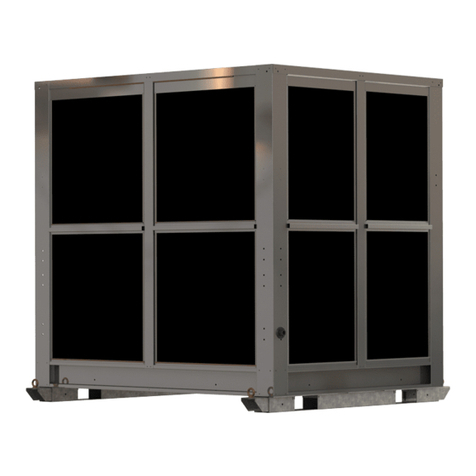
Seeley
Seeley Aira AL Series User manual

Seeley
Seeley Climate Wizard CW-P15 Owner's manual
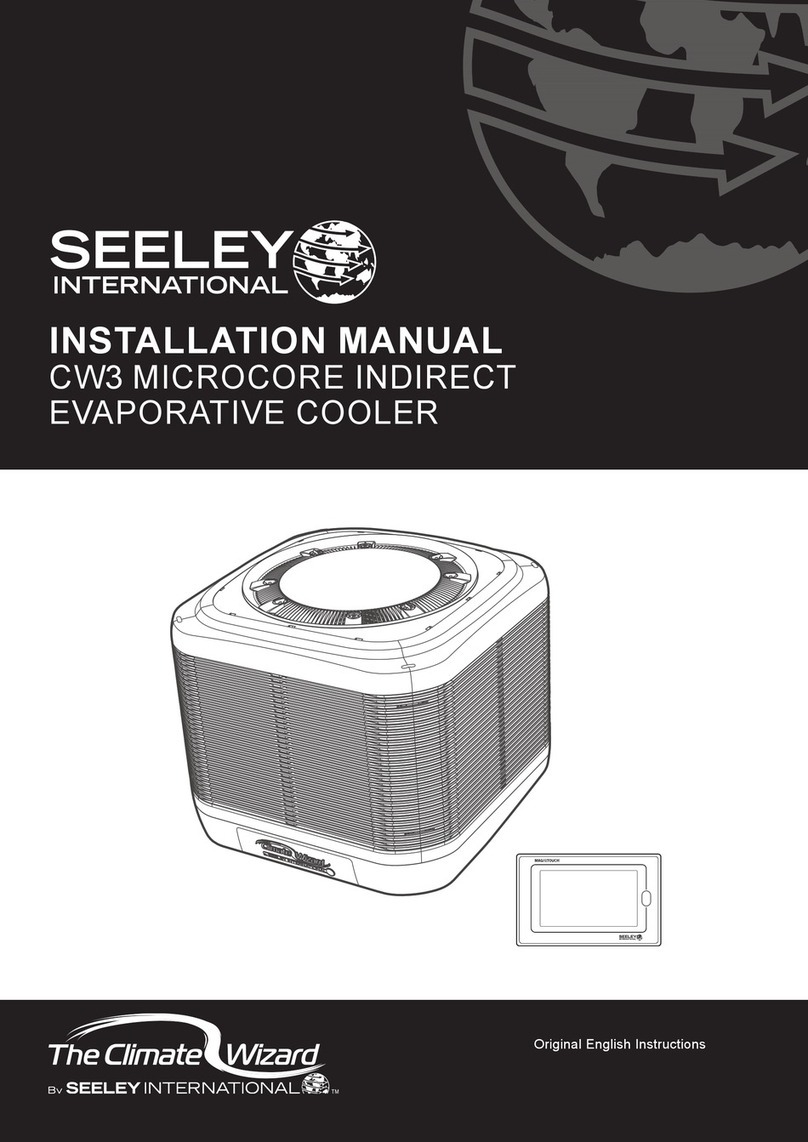
Seeley
Seeley CW3 User manual

Seeley
Seeley LCQ User manual
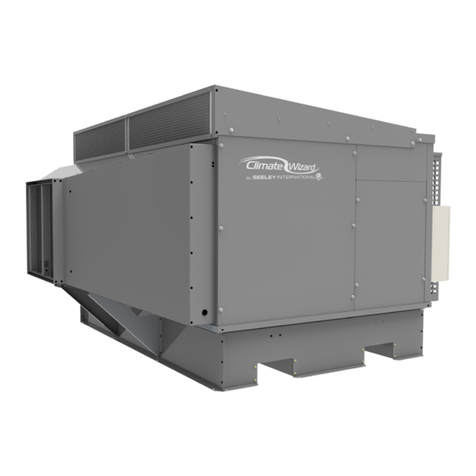
Seeley
Seeley Climate Wizard CW-H10 User manual
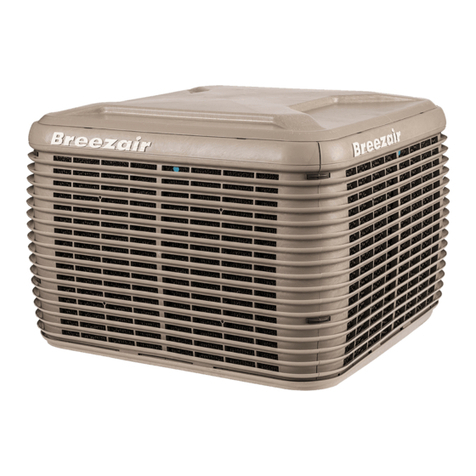
Seeley
Seeley Breezair EXS User manual
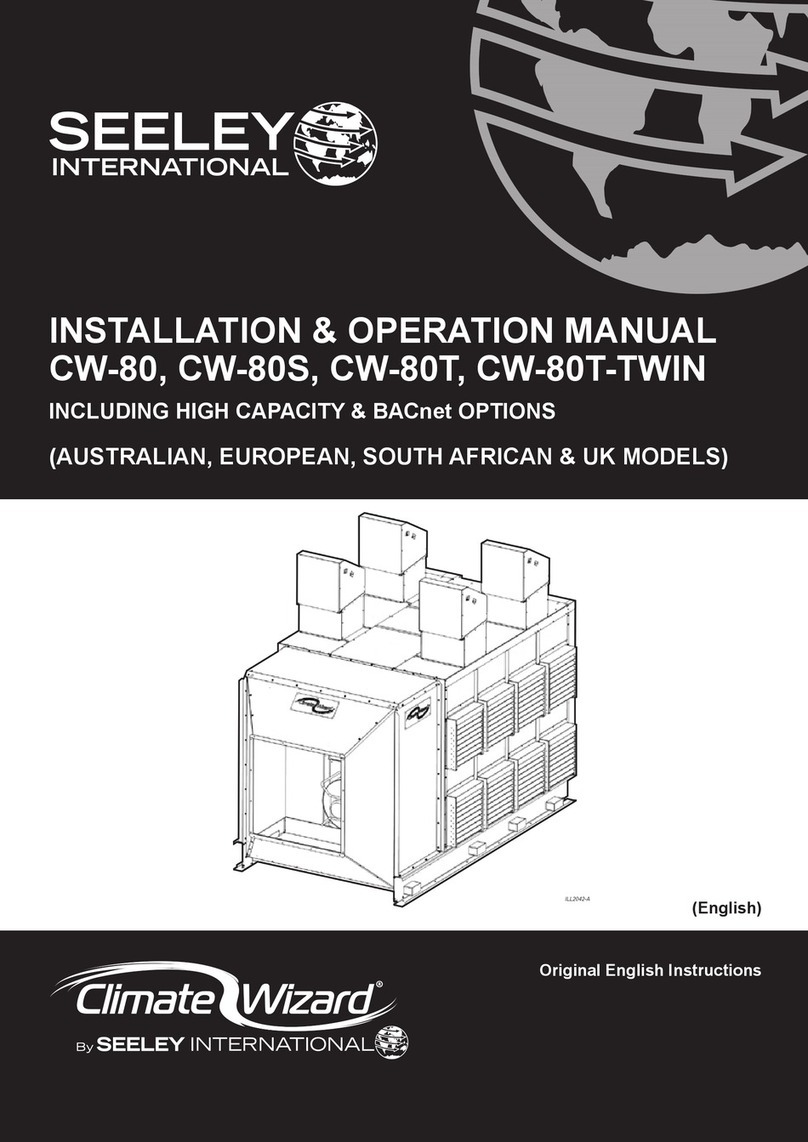
Seeley
Seeley Climate Wizard CW-80 User manual

Seeley
Seeley Breezair EXT User manual
